17+ Sample Scholarship Letter of Recommendation
-
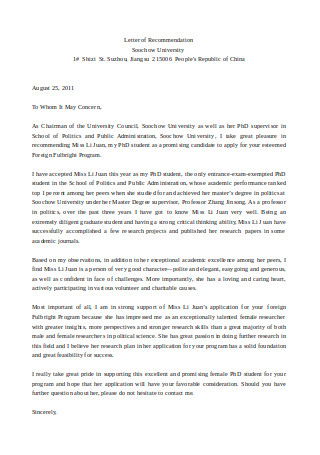
Recommendation Letter for Scholarship
-
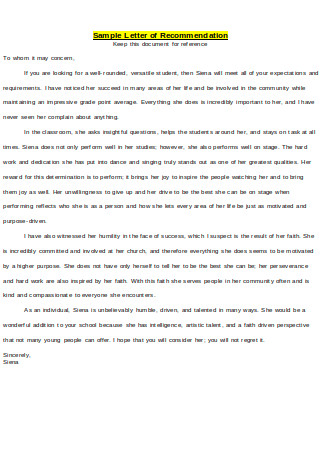
Sample Scholarship Letter of Recommendation
-
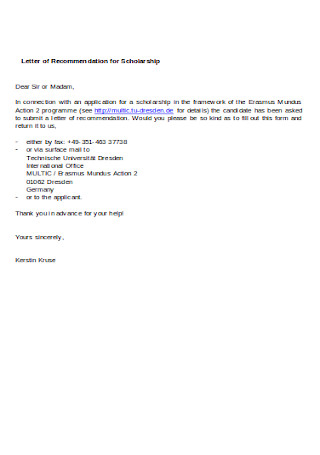
Letter of Recommendation for Scholarship
-
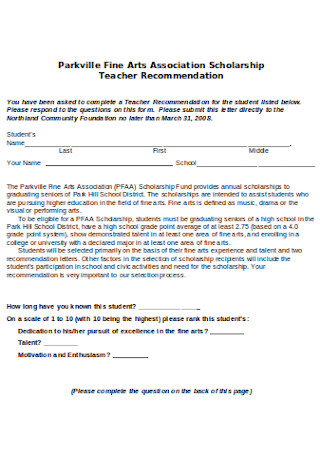
Scholarship Recommendation Letter Format
-
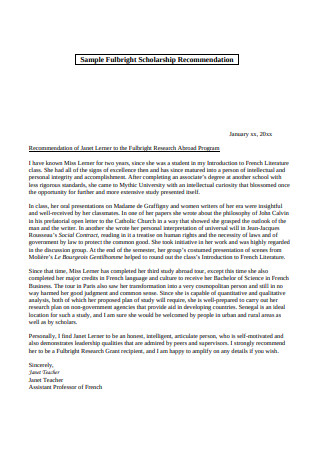
Sample Fulbright Scholarship Recommendation
-

Named (Need-Based) Scholarship Recommendation Letter
-
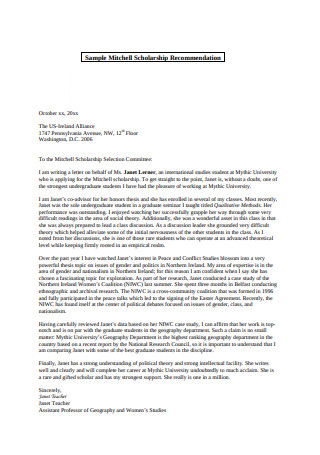
Scholarship Recommendation Letter
-
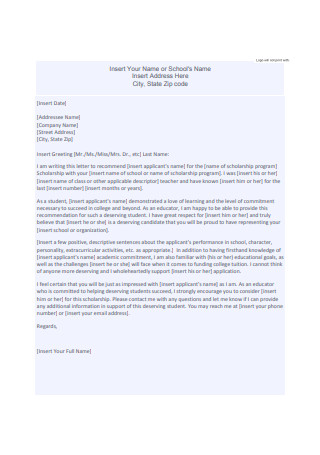
Scholarship Recommendation Letter Sample
-
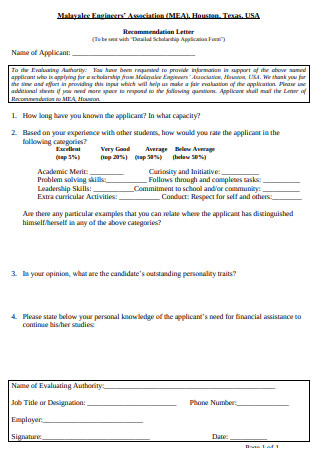
Scholarship Application Recommendation Letter
-
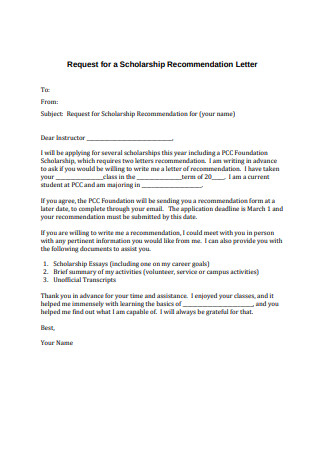
Request for Scholarship Recommendation Letter
-
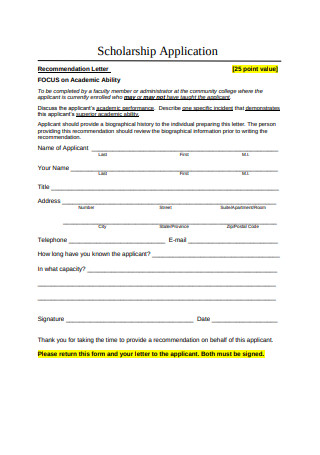
Format of Scholarship Recommendation Letter
-
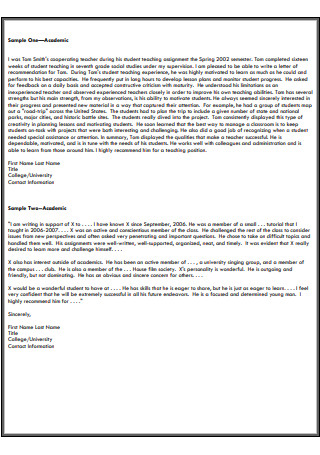
Letters of Recommendation for Scholarship
-
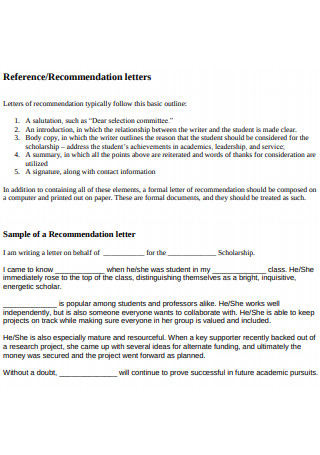
Sample Letter of Recommendation
-
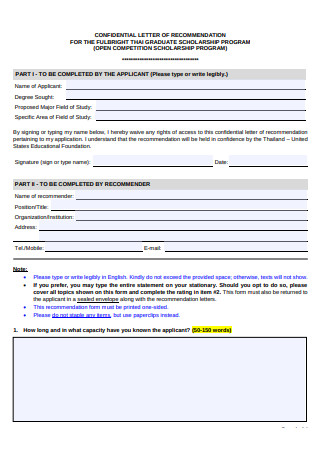
Letter of Recommendation
-
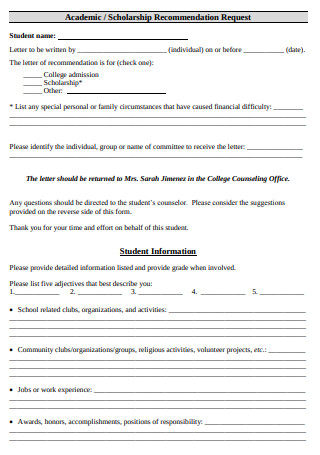
Academic Scholarship Recommendation Request
-
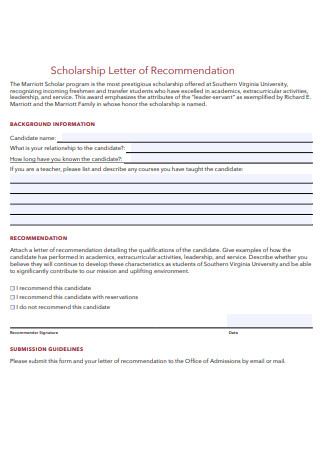
Scholarship Letter of Recommendation Form
-
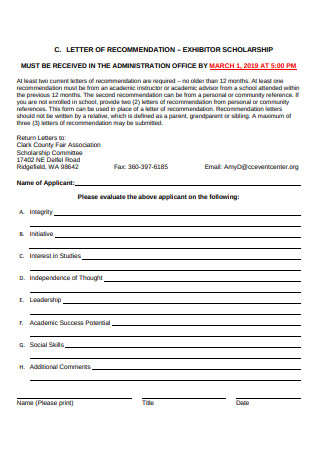
Letter of Recommendation for Exhibitor Scholarship
-
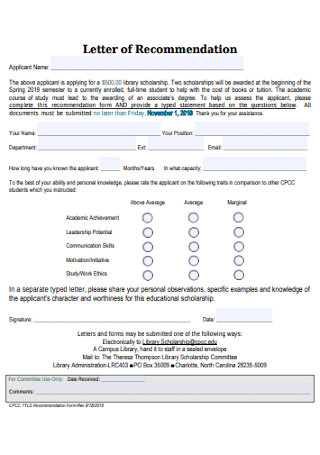
Letter of Recommendation Form Sample
FREE Scholarship Letter of Recommendation s to Download
17+ Sample Scholarship Letter of Recommendation
What Is a Scholarship Letter of Recommendation?
The Importance of a Scholarship Letter of Recommendation
How to Write a Scholarship Letter of Recommendation
The Dos and Don’ts of a Scholarship Letter of Recommendation
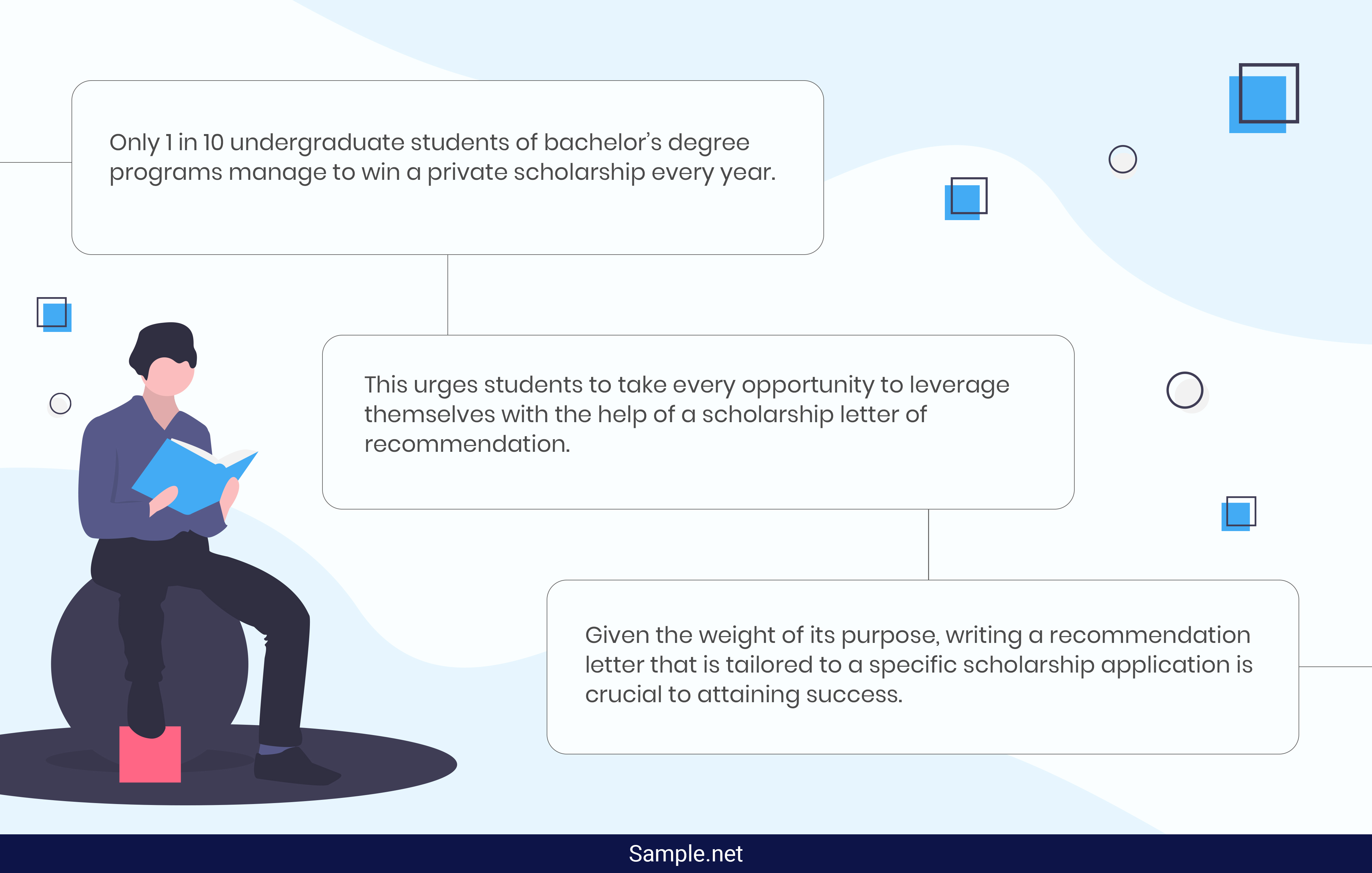
What Is a Scholarship Letter of Recommendation?
When someone asks you to write a recommendation letter for them, it means that they want you to vouch for them by saying that you believe in what they are capable of doing in some type of way. A scholarship letter of recommendation acts as a strong endorsement of a student’s personal and academic qualities and achievements. It expresses one’s capacity to fulfill the criteria set to determine whether the individual is an eligible candidate for the chosen scholarship. Students who are committed and goal-oriented usually have a greater chance of making the final cut. But stating one’s needs and merits isn’t enough to make a recommendation that is worth remembering. Hence, the reference letter must be personable, detailed, and backed by evidence to make the right impression. It aims to bring the person alive to the committee without the use of empty clichés.
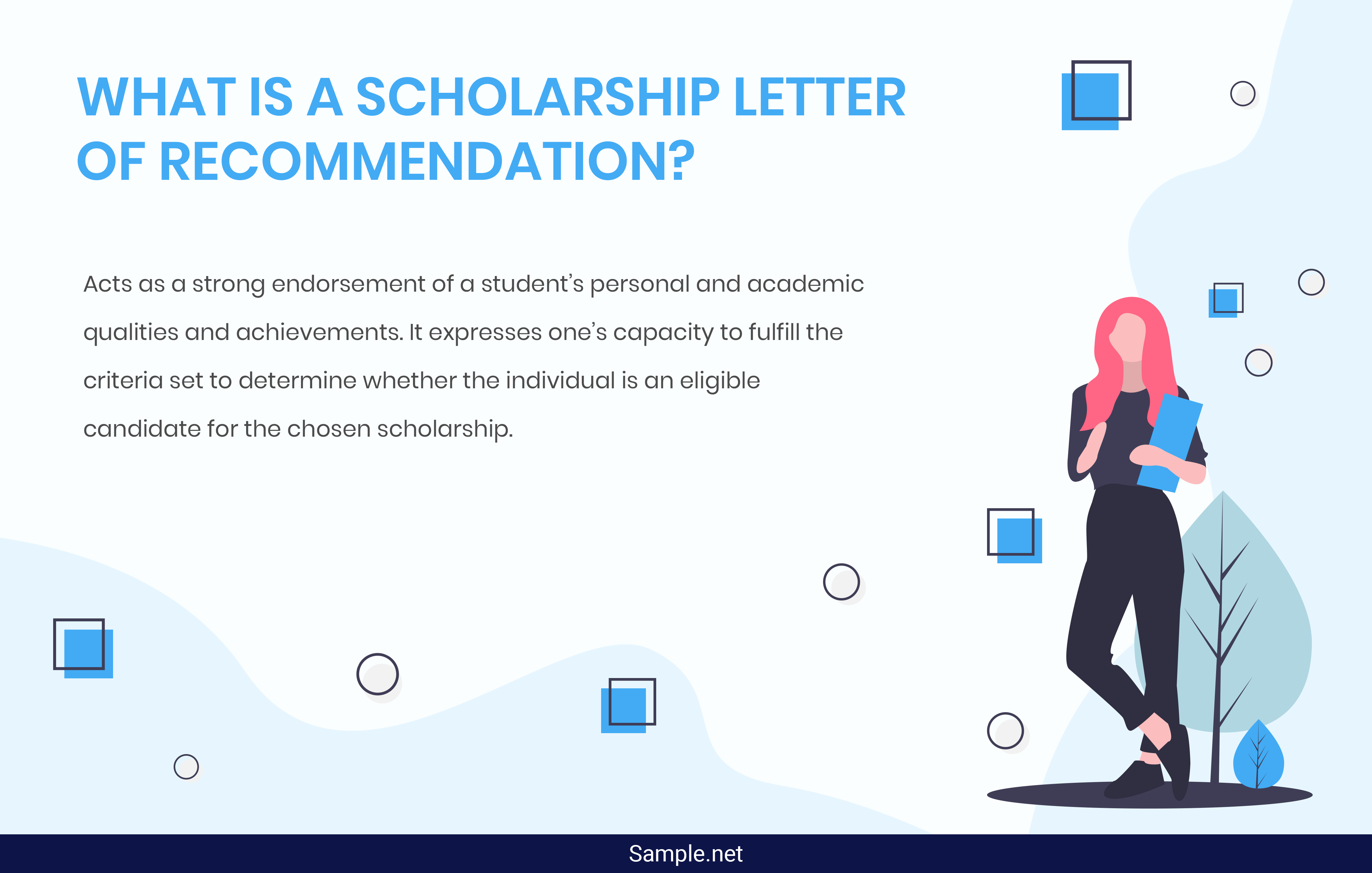
The Importance of a Scholarship Letter of Recommendation
Are recommendations a requirement? No. While they have become the norm, most schools do not consider them a necessity. But if you do find someone who could at least write a strong recommendation for you, admissions officers would appreciate it. The lack of a good recommendation is something that colleges would be concerned about, especially for students who don’t perform as well as their peers. It is even more difficult when they need the funds from the scholarship to continue their education. With that in mind, a student recommendation letter can be a valuable tool for a college application.
A recommendation letter is important for a variety of reasons. As previously mentioned, recommendation letters are a must if you want to apply for a scholarship program that a thousand other applicants have their eyes on. They make it easier for colleges and universities to sort through promising applications that are respected by industry professionals. These letters also reinforce what is written in a candidate’s application for admissions reps to keep in mind. A teacher recommendation letter even adds a more subjective and personal perspective to the admission committee’s assessment by revealing the strengths of an individual that go beyond the numbers reflected on paper. This is common in merit-based programs that provide scholarships to individuals based on academic excellence, volunteer experience, and more. It is one of the many factors that schools look into when making admissions decisions months before another academic year begins.
How to Write a Scholarship Letter of Recommendation
You might have a student who is one of the star players in your school’s volleyball team. With graduation right around the corner, you’re hoping this student gets a full scholarship ride to study at a renowned university that offers the best facilities for their sports programs. Unfortunately, the NCSA states that fewer than 2% of high school student-athletes are offered athletic scholarships by the time they reach their senior year. As you can imagine, this makes it a highly competitive matter that students strive hard to acquire. Writing a scholarship letter of recommendation for a student is a huge responsibility that must be taken seriously. Thus, it’s important to keep the following steps in mind.
Step 1: Add a Letterhead.
At the top left-hand corner of the page, you must include a personal letterhead that contains the date of when you are writing the letter, your full name, title, school name, address, and preferred contact. This part of the letter makes it easy for the recipient to identify who the author is and why he or she is a reliable source of information for the referral.
Step 2: Create an Introductory Paragraph.
The first part of your letter should briefly introduce the candidate, the scholarship being applied for, along with the nature and length of the author’s relationship with the said candidate. Think of it as a quick overview of your letter’s main body. It’s best to keep your introduction short and simple to retain engagement. Any implications that express why the student is a worthy candidate for the scholarship may be translated into a single statement. You can write about two or three sentences to complete the paragraph and move on to the next part of the letter.
Step 3: Describe How the Candidate Fits the Criteria.
A school’s criteria for a scholarship is not something that the average person could easily fulfill. In most cases, applicants are required to meet a quantitative standard to prove that they are a qualified candidate for the position. Bear in mind that a student’s grades and academic performance play a huge part in demonstrating why he or she is worth considering. Perhaps the candidate is an outstanding academic performer who has managed to go beyond the expectations of the academe. If you believe that those skills or traits may be used to the candidate’s advantage, don’t hesitate to include it in the letter.
Step 4: Provide Concrete Examples to Support Your Claims.
Now that you have expressed why the student is the right candidate for the scholarship, it’s time you provided definite examples to support your previous statements. You could talk about relevant schoolwork or awards that prove that the student excels in a particular field of study. A positive character assessment of the candidate can also build a stronger foundation for his or her application. These are traits that look past a person’s academic abilities by focusing on personal traits that make them unique. Depending on the number of examples you wish to include, this section of the recommendation letter may run anywhere from three to five sentences in length.
Step 5: Emphasize the Endorsement and Leave Your Contact Info.
Like any other business letter, the recommendation letter should end with a concluding paragraph that highlights the main point of your message. It should clearly indicate your confidence in the candidate as a potential student for the school’s scholarship program. Make sure to list your contact information so that the admissions officer would know how to reach you for further questioning. It is also necessary to sign the document by hand to certify its authenticity.
Finally, remember to proofread your letter of recommendation before handing it over to the school’s admissions committee. Everything from the name of the addressee down to the specific scholarship being applied for must be correct. Watch out for spelling and grammatical mistakes that could affect the overall tone of your letter. If possible, you could ask anyone other than the person you are vouching for to review the content of the letter prior to sending it.
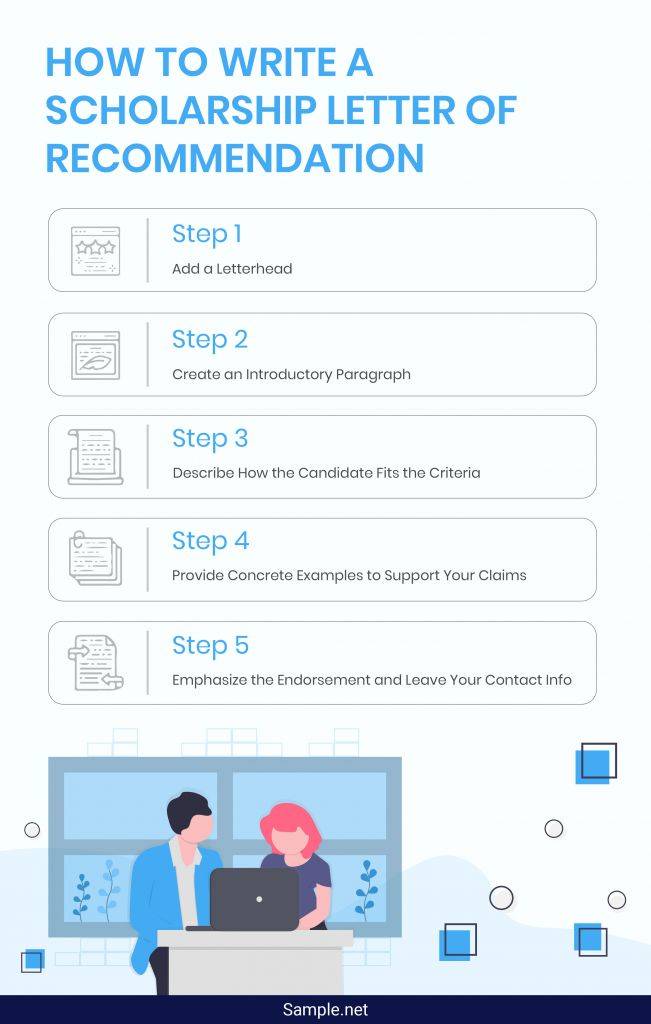
The Dos and Don’ts of a Scholarship Letter of Recommendation
As a teacher, guidance counselor, or coach, writing a scholarship letter of recommendation is all in a day’s work. Knowing how to improve the quality of its content is sure to influence the admissions reps in making a favorable decision for the applicant. Even if you are using a recommendation letter template to produce the appropriate letter, it’s still important to individualize your content to satisfy a particular need. So to complete the student letter of recommendation for scholarship with ease, take note of the following tips.
The Dos
1. Do clarify the details to be included in the letter.
Once you decide to agree to the student’s request to write the letter, set up a meeting to discuss matters beforehand. While it won’t be fair for them to have a definite say on what goes in the letter, it does help to know what can be included and what to leave out. Perhaps there are a few things that you aren’t quite aware of but are worth emphasizing in the letter. Any additional information that could give the student the upper hand can also serve as an advantage.
2. Do create a story about the student.
It’s easy to say something about a person if it’s all in writing. But using all the possible adjectives in the book won’t offer much help, so consider telling a story that illustrates the applicant in a positive light. You can provide an example of a situation where a specific trait was applied. It doesn’t have to be a 10-page novel of the event, but a short story that will make it easy for a reader to visualize a person’s character. This technique can engage recipients and encourage further reading as you try to provide a better glimpse of who the applicant really is.
3. Do focus on the individual’s character than achievements.
Knowing how your students perform in class doesn’t mean you know everything about who they really are. A student who does rather fairly in class yet still excel in extracurricular activities can be equally competent for the scholarship. During your discussion with the candidate, you might want to use this as an opportunity to get to know the person even more. Ask them about their likes, interests, and dreams in life. A casual conversation about what they want to do and where they want to be is sure to strengthen your recommendation in a dramatic way. Admissions officers may see the value in grades, but it’s not the only item in their criteria. The personal attributes of the applicant can speak volumes about how he or she could fit into the school’s environment. Remarkable grades may be worth noting, but even that won’t be enough to earn a scholarship.
4. Do be wary of the length of the letter.
There could be over a thousand applications that the school’s admissions committee would have to sort through on a weekly basis. Standing out among a group of smart, talented, and skilled individuals can be a challenge. To increase your chances of success, you must take the length of your recommendation letter into account. Lengthy letters with wordy texts don’t always contain the most valuable information. Quality content is essential in making an impression that readers will remember. A one-page recommendation should be enough to get your message across coherently.
5. Do encourage further discussions.
In the last part of the scholarship letter, it’s a good idea to include your contact details to keep the recipient informed. Doing so serves as an invitation that will allow the reader to get in touch with you at any given time. Open communication will be an advantage to the candidate because it shows that there’s a lot more the author is willing to share in a thorough discussion. You need to be open to any questions that the admissions rep may have in regard to the contents of the letter. If they question the claims you’ve made in the letter, prepare evidence to support it. Background checks are pretty common to help verify the legitimacy of a source, so you can expect a call from the school a few days after sending the letter.
The Don’ts
1. Don’t use generalities.
Avoid pointing out general characteristics or skills that the average person is bound to possess. It’s easy to define someone as a hardworking individual, but in what sense? You need to prove why the person you are writing about is a qualified candidate for the scholarship by showing what he or she can bring to the table. Think about what the student is capable of doing, as well as any potential attributes that are worth looking into. A strong recommendation should highlight the key qualities that make the subject you are writing about unique.
2. Don’t go overboard with your claims.
Be honest. Don’t claim that a student is capable of achieving one thing if the facts and figures say otherwise. It may seem tempting to write exaggerative statements that paint the student in a fascinating light, but setting the bar too high can sometimes put you in hot water. It’s best to make a recommendation based on sound judgment. The last thing you would want is for the admissions rep to find out that what you have written in the letter contradicts the student’s actual performance in class.
3. Don’t neglect criticisms.
Although a recommendation letter is meant to highlight the positives, this does not mean you aren’t allowed to provide mild criticisms that shed a light on one’s weaknesses. Transparency can be a good thing, especially when you want to keep it as real as possible. It’s best to avoid recommendations that can leave a negative impact on one’s chances at acceptance. Instead, turn your attention to the attributes that you know the candidate is trying to improve. What’s important is your means of expressing how the student managed to overcome the situation by exhibiting signs of self-development.
4. Don’t make the letter about you.
You may feel pressured to write something good about yourself just to prove that you’re credible enough to make the recommendation. But what you’ve managed to achieve in your many years of experience in the field is only the least of a reader’s worries. The recommendation may contain an overview of who you are, what you do, and why you are qualified to write the letter for a particular applicant, as long as it does not overshadow the candidate in any way.
5. Don’t be too specific when addressing the letter.
It is possible for a student to apply for a scholarship at different community colleges and universities across the region. But with the number of students that have asked you for a recommendation letter, along with the list of schools they are hoping to get a scholarship in, addressing a letter to every one of their admissions officers isn’t exactly the most practical approach. The best you could do is download a recommendation letter template that you could easily personalize to suit the culture of a particular school. That way, you won’t have to worry about making drastic changes to each of the letters that you send.
Writing a recommendation letter for scholarship is a lot of work. The letter you make could help determine a student’s academic future, putting much pressure into the task of creating a letter that’s worth the read. But as much as you want to compose a letter that is fresh and original, looking at a few recommendation letter templates is a great way to draw inspiration for your content and to understand the basic components of a formal letter. It might be a daunting task to fulfill, but the outcomes brought by a well-written scholarship recommendation letter will definitely be worth the effort.
